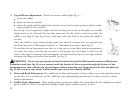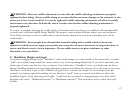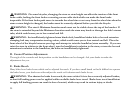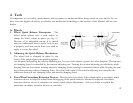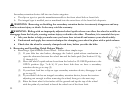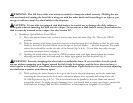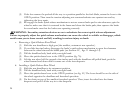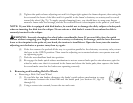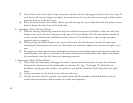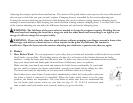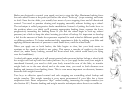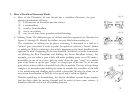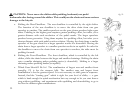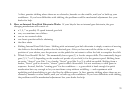26
(3) If your front fork has a clip-on type secondary retention device, disengage it and go to he next step. If
your front fork has an integral secondary retention device, loosen the axle nuts enough to allow wheel
removal; then go to the next step.
(4) Raise the front wheel a few inches off the ground and tap the top of thewheel with the palm of your
hand to knock the wheel out of the fork ends.
b. Installing a Bolt-On Front Wheel
(1) With the steering fork facing forward, insert the wheel between the fork blades so that the axle seats
firmly at the top of the slots which are at the tips of the fork blades. The axle nut washers should be
on the outside, between the fork blade and the axle nut. If your bike has a clip-on type secondary
retention device, engage it.
(2) While pushing the wheel firmly to the top of the slots in the fork dropouts, and at the same time
centering the wheel rim in the fork, use the correct size wrench to tighten the axle nuts as tight as you
can.
(3) Re-engage the brake quick-release mechanism to restore correct brake pad-to-rim clearance; spin the
wheel to make sure that it is centered in the frame and clears the brake pads; then squeeze the brake
lever and make sure that the brakes are operating correctly.
c. Removing a Bolt-On Rear Wheel
(1) If your bike has rim brakes, disengage the brake’s quick-release mechanism to open the clearance
between the wheel rim and the brake pads (see Section 4.C, figs. 11 through 14). Shift the rear
derailleur to high gear (the smallest rear sprocket) and pull the derailleur body back with your right
hand.
(2) Using a correctly sized wrench, loosen the two axle nuts.
(3) Lift the rear wheel off the ground a few inches and, with the derailleur still pulled back, push the
wheel forward and down until it comes out of the rear dropouts.



